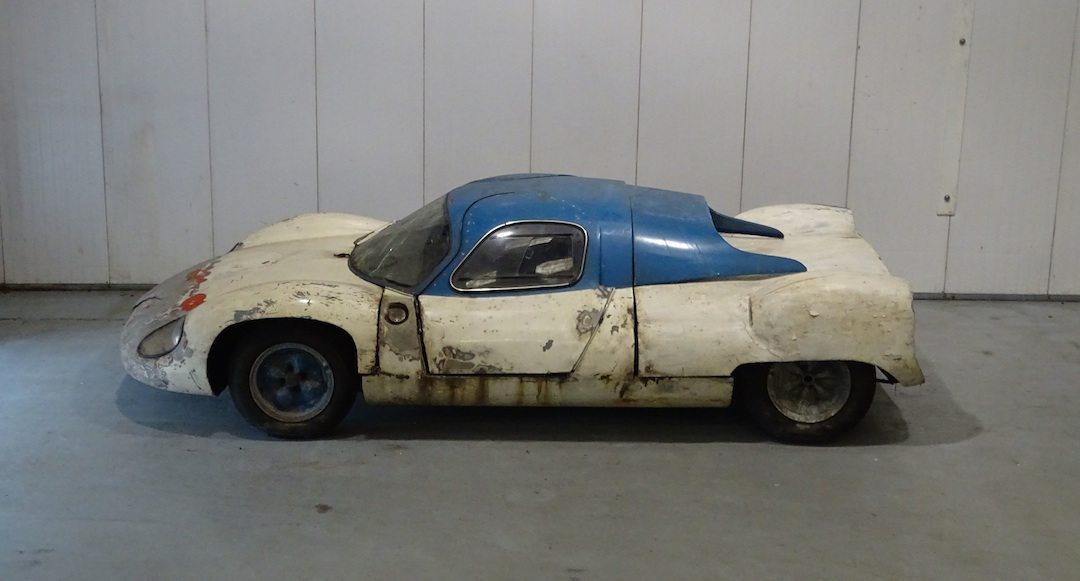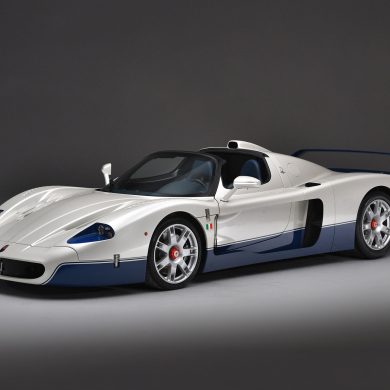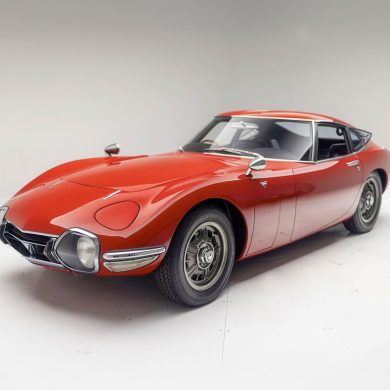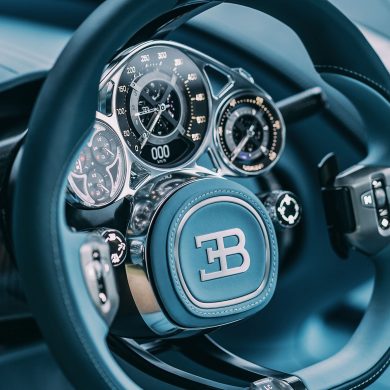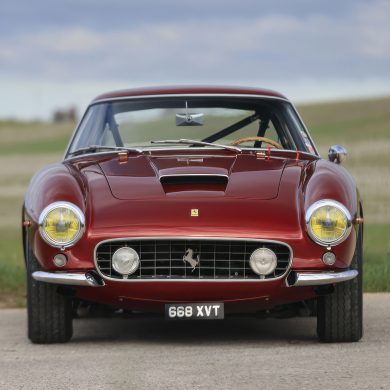A fine example of a car that burst onto the 1960s racing scene — the Costin Nathan — will be sold by H&H Classics following its awakening from a 45-year slumber in a garage. It was discovered by a house clearance company in Manchester, England, and will be sold by H&H at their Chateau Impney Hillclimb sale in the British Midlands on July 10.
Racing as both a Spyder and GT in period, the two-seater now requires total restoration. Appearing to be substantially complete, it is estimated to fetch in the region of £25,000-£30,000, and comes with a highly prized Hewland MK5 gearbox and Ford-based Twin-Cam engine in pieces.
Despite its short career, the Costin Nathan proved to be a very capable racer. Surviving examples showcase Frank Costin’s unique talent for designing lightweight and very aerodynamic racers.
The car on offer is the original works prototype as raced with considerable success by Roger Nathan in 1966. Bought by the present owner (now deceased) on January 6, 1967, without the initial Imp engine, it was given a Twin-Cam power plant coupled to a Hewland Mk 5 transmission.
The driver was to be Chris Meek and the car was further modified with a hardtop to allow it to run as a GT. A large folder of correspondence charts the trials and tribulations of the next three years, which added but a single class win at Snetterton in May 1967 to the two-seater’s impressive racing resumé.
“It is an amazing restoration project,” says John Markey, operator of H&H Classics’ Hindhead, Surrey, operation, “and a true ‘barn find’ slumbering in the late owner’s garage for the last 45 years. This is quite a special car. It is the original works prototype as raced successfully by Roger himself in ’66. From a personal angle, the car as an Imp-engined GT was a delight to drive, very quick in its class with neutral handling, and my car did the Targa Florio, the Montjuich 12 Hours and an event at Anderstorp in Sweden without any mechanical problems whatsoever.”
A collaboration between legendary engineer/aerodynamicist Frank Costin and gifted racer/tuner Roger Nathan, work on the nascent Costin-Nathan project began in 1965 with the prototype making its debut at the following January’s Racing Car Show. Like several of Costin’s previous designs, the newcomer featured a lightweight central monocoque tub, fabricated from plywood with tubular steel subframes attached fore and aft. The resultant structure was not only commendably light but also reputed to be capable of handling 350hp! Not able to get quite that level of power from a Hillman Imp engine, Roger Nathan was nevertheless able to coax a reliable 100bhp/liter out of the advanced all-alloy four-cylinder unit. Mid-mounted and canted over by 54 degrees, the 998cc power plant was mated to a close-ratio gearbox. Weighing in at just 700 pounds with independent suspension all around, four-wheel disc brakes and magnesium alloy wheels, the Costin-Nathan proved prodigiously fast.
Clothed in aluminum where its later production siblings used fiberglass, the works prototype achieved considerable success with Nathan at the wheel. Initially configured as a Spider, it recorded five class wins and a 2nd-in-class during 1966; the undoubted highlight of which was his victory in September’s Coupe de Paris, ahead of fierce Fiat-Abarth works opposition. Keen to raise funds and with an entry for the 24 Hours of Le Mans already in his sights, Nathan sold the car to G.M. Horsley on January 6, 1967. Horsley hired Chris Meek as his driver, installed a more powerful Lotus Twin-Cam engine and had the bodywork updated by Nathan to enclosed GT specification. However, various teething problems and some bad luck meant that the car was never as successful in its revamped guise, as Meek scored but one further class win at Snetterton during 1967.
Retired after a few frustrating seasons, the Costin Nathan remained in Horsley’s care and was ignored for almost half a century until being released by his estate. A unique proposition that if properly restored would be welcome at some of the world’s most prestigious historic race meetings, the Works Prototype is now coming to market for the first time in 49 years! Please visit www.classic-auctions.com for compete information.


